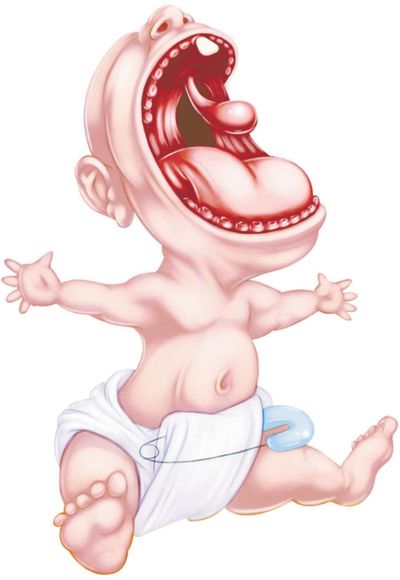Timeout for teeth
With regular dental visits and proper hygiene, you’ll keep your baby smiling

New mom Christine Chansley had read all about baby bottle tooth decay. Nearly every baby book on the market warns parents not to put children to bed with a bottle of milk, formula or juice. The practice can lead to tooth decay.
But Chansley, of Tacoma, had no idea that pediatricians and dentists also recommend that, after every feeding, she wipe daughter Cerridwen’s tiny, toothless gums with a clean, damp washcloth or piece of gauze.
Like many babies, Cerridwen likes to fall asleep after feeding. Says Chansley: “I can’t see putting my hands in a sleeping baby’s mouth.”
But dental experts are urging parents to start dental hygiene at birth. While conventional wisdom once argued that baby teeth don’t matter because they soon fall out, dentists now know that they set the stage for what is to come.
The Washington Dental Service Foundation, a nonprofit arm of dental insurer Washington Dental Service, has launched a campaign to draw attention to the care of baby teeth and gums.
Dr. Ovidio Penalver, a Puyallup, Wash., pediatrician, is one doctor who’s on board with the message.
“Neglected baby teeth lead to problems with permanent teeth,” he says. “Dental problems can lead to further problems that affect the whole health of a child.”
Dental problems are especially acute among low-income children.
A 2005 survey published by the state Department of Health found that 45 percent of low-income preschoolers in Washington had dental decay, compared with only 28 percent of preschoolers nationally.
Allowing children’s dental issues to fester can result in pain, malnutrition, speech development problems and damage to self-esteem, Penalver warns.
In years past, parents were often advised to have their child’s teeth checked by age 3. But new research has shown that earlier checkups can help prevent dental disease, according to the Washington Dental Service Foundation.
Experts, including the foundation and the American Academy of Pediatric Dentistry, now urge parents to have their babies’ teeth examined by a dentist or pediatrician as soon as teeth appear, and at least by age 1.
“When you have teeth, you have to take care of them,” Penalver says.
Earlier oral checkups mean problems are spotted sooner. The exams are also a chance for a doctor or dentist to offer parents advice on caring for their baby’s teeth and offer suggestions on diet and eating habits.
“All children go to their primary care medical office many times before age 3,” says Dianne Riter, spokeswoman for the Washington Dental Service Foundation. “At that time, when the primary care provider is looking at overall health, it make sense for them to also look at teeth and assess the risk of decay.”
Penalver believes primary-care doctors such as pediatricians and family physicians can play an important role.
“Most young kids don’t go to the dentist,” he says, so it’s up to doctors to step in and offer care. “You need to emphasize regular cleaning of teeth. And as soon as you can, flossing.”
While the use of fluoride to prevent cavities can be controversial, with some arguing that ingesting fluoride is dangerous, doctors and dentists continue to recommend it.
Penalver suggests that parents learn whether their municipal water supply is fluoridated. (Spokane’s water is not.)
“In areas without fluoride, children should have fluoride supplementation starting at 6 months (of age),” he says.
In addition, Penalver says, “We are starting to use fluoride varnish in our office as soon as they have teeth.”
The varnish is a substance that is painted directly onto a child’s teeth. A study published in 2006 in the Journal of Dental Research found that fluoride varnish treatment could cut children’s cavity rates in half.
Children in the study ranged from 6 months to 3 1/2 years old.
“It’s something primary-care doctors can do in their office,” Penalver says.